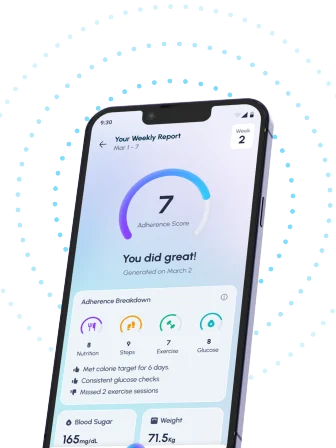Table of Contents
- Power Up Your Diabetes Diet with 3 Nuts
- Tuesday’s Nutritional Boost: 3 Nuts for Diabetes
- Diabetes-Friendly Snack: 3 Nuts to Try Today
- 3 Nuts That Can Supercharge Your Diabetes Diet
- Best Nuts for Diabetes Management: A Tuesday Guide
- Frequently Asked Questions
- References
Managing diabetes can feel like a constant balancing act, but making smart food choices is a powerful tool in your arsenal. This Tuesday, let’s talk about simple ways to power up your diabetes diet with some surprisingly nutritious snacks. We’ll explore three specific nuts that can offer significant health benefits, helping you better manage your blood sugar levels and overall well-being. Ready to discover which nuts are perfect for a delicious and healthy boost? Let’s dive into “Power Up Your Diabetes Diet: 3 Nuts for Tuesday’s Nutritional Boost” and learn how to incorporate these amazing superfoods into your weekly meal plan!
Power Up Your Diabetes Diet with 3 Nuts
Managing diabetes, especially in hot, humid climates like India’s, needs a smart approach to food. While keeping your carb intake balanced (around 45-60 grams per meal, give or take, depending on you) is key, choosing the right foods makes a huge difference. Let’s look at three nuts that can seriously boost your diabetes management.
Almonds: Your Blood Sugar’s Best Friend
Almonds are packed with healthy fats, fiber, and protein – a winning combination. This trio slows down how quickly sugar enters your bloodstream, preventing those nasty blood sugar spikes. A small handful (around 15-20) makes a satisfying snack, perfect for breakfast or a mid-morning boost. Just remember to keep an eye on your portion to stay within your daily carb goals. Think of it like this: almonds are like tiny, delicious shock absorbers for your blood sugar.
Walnuts: Omega-3 Powerhouses
Walnuts aren’t just tasty; they’re brimming with omega-3 fatty acids. These are superstars for fighting inflammation, which can worsen diabetes complications. A sprinkle on yogurt, salads, or even your evening chaat adds flavor and health benefits. Imagine them as tiny, nutty firefighters, battling inflammation.
Cashews: Magnesium Magic
Cashews are a great source of magnesium, often lacking in people with diabetes. Magnesium is crucial for insulin sensitivity – helping your body use insulin effectively. A small serving with a meal or as a snack gives your magnesium levels a helpful nudge. Portion control is still vital, though. Think of cashews as your insulin’s secret weapon.
Remember: This isn’t a replacement for advice from your doctor or a registered dietitian. They can tailor a plan to your specific needs and climate. These nuts, part of a balanced diet, can be a delicious way to support your diabetes management.
For more tips, check out our articles on 10 Proven Tips for Effective Diabetes Management and How to Lose Weight with a Diabetes Diet Plan.
Tuesday’s Nutritional Boost: 3 Nuts for Diabetes
Did you know that sugary drinks significantly increase your diabetes risk—by a whopping 26%? Making smart food choices is key, whether you’re managing diabetes or aiming to prevent it. Let’s talk about three amazing nuts, readily available in India and other tropical areas, that can be real game-changers for your blood sugar.
Almonds: The King of Nuts
Almonds are superstars! They’re packed with healthy fats (think monounsaturated, the good kind!), fiber to keep you full, and protein for sustained energy—all crucial for stable blood sugar. Plus, their magnesium helps your body use insulin more effectively. A small handful (about 10-12) makes a perfect afternoon pick-me-up. Just grab the unsalted kind to keep sodium in check.
Cashews: A Creamy Complement
Okay, cashews are a little higher in calories, but they’re still a valuable source of healthy fats and minerals. Their creamy texture makes them incredibly versatile in Indian cooking—think delicious curries or a satisfying crunch in stir-fries. The trick? Moderation! A quarter-cup serving is more than enough to add a nutritional boost to your meal.
Walnuts: The Omega-3 Powerhouse
Walnuts are real powerhouses, especially for heart health, which is often a concern with diabetes. They’re brimming with omega-3 fatty acids, those healthy fats that can help regulate blood sugar and boost your overall well-being. Think of them as a delicious topping for yogurt, oatmeal, or salads. Remember, a little goes a long way!
Choosing the right snacks is half the battle in managing blood sugar. These three nuts are a simple yet powerful way to improve your diabetes management. For more diabetes-friendly food ideas, check out 20 Best Foods for People with Diabetes – Tap Health. Always chat with your doctor or a registered dietitian to personalize your plan. And if you’re wondering about peanuts, this article might help: Is roasted peanuts good for diabetes? What You Need to Know
Diabetes-Friendly Snack: 3 Nuts to Try Today
Managing diabetes, especially in warmer climates like India, demands smart snacking. With a significant portion of those diagnosed—over 61% between 20 and 64 years old, according to the IDF Diabetes Atlas—finding convenient, healthy options is crucial. Life’s busy, right? So we need snacks that work with our schedules, not against them.
Power-Packed Nuts for Diabetes Management
Luckily, some nuts are real nutritional superheroes for diabetes management. Think of them as tiny powerhouses! Here are three readily available options:
- Almonds: These aren’t just crunchy; they’re packed with healthy fats, fiber, and protein. This trifecta helps regulate blood sugar and keeps you feeling full, preventing those mid-afternoon sugar crashes. Plus, the magnesium boost is a bonus for overall well-being. A small handful (15-20) is perfect.
- Walnuts: Beyond their deliciousness, walnuts are brimming with omega-3 fatty acids—nature’s anti-inflammatories. These can improve insulin sensitivity, a game-changer for diabetes management. Four or five walnut halves make a satisfying and beneficial snack.
- Cashews: While a tad higher in calories, cashews still bring healthy fats to the table. Just remember to choose unsalted varieties to keep your sodium intake in check—important for everyone, but especially for those managing diabetes. Ten to twelve cashews are a great addition to a balanced meal plan.
Regional Considerations
Remember, fresh, local is best! Choose nuts that are readily available in your region and store them properly to preserve their nutritional goodness. Think about incorporating them into your favorite Indian recipes – a sprinkle of almonds in your kheer, perhaps? Small changes, big impact. For more snack ideas, check out our guides on bedtime snacks for diabetics and diabetes-friendly fruits.
3 Nuts That Can Supercharge Your Diabetes Diet
Managing diabetes is a balancing act, and what we eat plays a huge role. Did you know that nearly 30% of people with diabetes develop kidney problems? That’s why choosing the right foods is so crucial – it’s not just about blood sugar, it’s about protecting your whole body. Especially in places like India and other tropical countries where diabetes is more common, making smart food choices is vital. Let’s look at three readily available nuts that can be real game-changers:
Almonds: A Heart-Healthy Powerhouse
Almonds aren’t just tasty; they’re packed with good stuff. Think monounsaturated fats – these help keep your blood sugar steady. They’re also brimming with fiber, which keeps you feeling full and prevents those mid-afternoon sugar cravings. Plus, the vitamin E acts as a bodyguard for your cells. A small handful – say, 15-20 almonds – makes a perfect, satisfying snack.
Walnuts: Kidney Support in a Shell
Walnuts are superstars when it comes to fighting inflammation, a sneaky culprit behind many diabetes complications, including kidney disease. Their omega-3 fatty acids are key players here. Think of them as tiny inflammation fighters, protecting your kidneys. Sprinkle some chopped walnuts on your salad or yogurt for a delicious and beneficial boost. Want to know more about nuts and other dry fruits? Check out this helpful guide: Which Dry Fruit is Good for Diabetes?
Cashews: The Balanced Option
Cashews are a bit higher in fat than almonds and walnuts, but don’t let that scare you. They’re rich in magnesium, a mineral that helps with insulin regulation – a crucial aspect of blood sugar control. The key is moderation; a small serving as part of a balanced meal will do the trick.
Incorporating these nuts into your diet can make a real difference. They’re delicious, convenient, and beneficial. Remember, everyone’s needs are different, so chat with your doctor or a registered dietitian to create a plan that’s perfect for you and considers the nuts readily available in your region. And while we’re talking about smart food choices, be mindful of certain fruits – here’s a helpful list: 7 Worst Fruits for Diabetics to Avoid – Tap Health
Best Nuts for Diabetes Management: A Tuesday Guide
Managing diabetes isn’t just about numbers; it’s about feeling your best. Diabetic neuropathy, a nerve problem affecting a significant portion of people with diabetes (30-50%), can be incredibly painful and limiting. But here’s the good news: the right foods can make a real difference. Today, let’s talk about three fantastic nuts that are particularly well-suited for those managing diabetes, especially in warmer climates like India and the tropics: almonds, walnuts, and cashews.
Almonds: Your Blood Sugar’s Best Friend
Almonds are nutritional powerhouses. Their monounsaturated fats and fiber help even out blood sugar spikes, preventing those energy crashes. Plus, the magnesium helps support healthy nerve function—a win-win if you’re dealing with neuropathy. Think of them as tiny, delicious nerve protectors! Sprinkle them on your yogurt, add them to a smoothie, or use them as a crunchy topping for your saag paneer – a handful a day can make a noticeable difference.
Walnuts: Fighting Inflammation, One Nut at a Time
Walnuts are packed with omega-3 fatty acids, nature’s anti-inflammatory superstars. Since chronic inflammation contributes to diabetes complications, walnuts are a smart choice. Their fiber also helps regulate blood sugar. Try adding them to your morning oatmeal, a curry, or even a salad for a healthy boost of flavor and nutrition. Imagine them as tiny, flavorful warriors battling inflammation.
Cashews: A Healthy Fat Treat (in Moderation)
Cashews are a little higher in calories, but their monounsaturated fats are great for heart health—a vital concern for people with diabetes. A small handful can be a satisfying snack, especially on a hot day. Think of them as a delicious reward (in moderation!), maybe incorporated subtly into your favorite Indian sweets.
Choosing the right nuts can significantly impact your diabetes journey. Making almonds, walnuts, and cashews a regular part of your diet can benefit both your blood sugar levels and your overall well-being. Remember, though, this isn’t a magic bullet! Always talk to your doctor or a registered dietitian for personalized advice. And don’t forget the importance of stress management – check out our guides on effective diabetes management and stress management for better diabetes control for more tips.
Frequently Asked Questions on Power Up Your Diabetes Diet
Q1. What are the key benefits of incorporating almonds, walnuts, and cashews into a diabetes diet?
These nuts offer a unique combination of healthy fats, fiber, and protein that help regulate blood sugar levels. Almonds help slow down sugar absorption, walnuts combat inflammation, and cashews support insulin sensitivity. They also provide essential nutrients like magnesium and omega-3 fatty acids, contributing to overall health.
Q2. How can I incorporate these nuts into my daily diet without exceeding my carbohydrate goals?
Start with small portions. A handful of almonds (15-20), a few walnut halves (4-5), or a small serving of cashews (10-12) are good starting points. Incorporate them into snacks, salads, yogurt, or even as a topping for certain dishes. Remember to monitor your carbohydrate intake to ensure you stay within your daily limits.
Q3. Are there any potential drawbacks or considerations when eating these nuts for diabetes management?
While beneficial, these nuts are calorie-dense. Portion control is crucial to prevent exceeding daily calorie goals. Also, always choose unsalted varieties to manage sodium intake. Individuals with nut allergies should avoid them completely.
Q4. Should I replace my current diabetes management plan with just eating these nuts?
No, these nuts are a supplemental addition to a balanced diabetes management plan, not a replacement. It’s crucial to consult your doctor or registered dietitian for personalized advice tailored to your specific needs and health conditions before making significant dietary changes.
Q5. Where can I find more information and resources to support my diabetes management journey?
Consult your doctor or a registered dietitian for personalized guidance. Many online resources offer valuable information, including educational materials and support groups. Look for reputable sources that align with current medical recommendations for diabetes management.
References
- A Practical Guide to Integrated Type 2 Diabetes Care: https://www.hse.ie/eng/services/list/2/primarycare/east-coast-diabetes-service/management-of-type-2-diabetes/diabetes-and-pregnancy/icgp-guide-to-integrated-type-2.pdf
- What is Diabetes: https://www.medschool.lsuhsc.edu/genetics/docs/DIABETES.pdf




